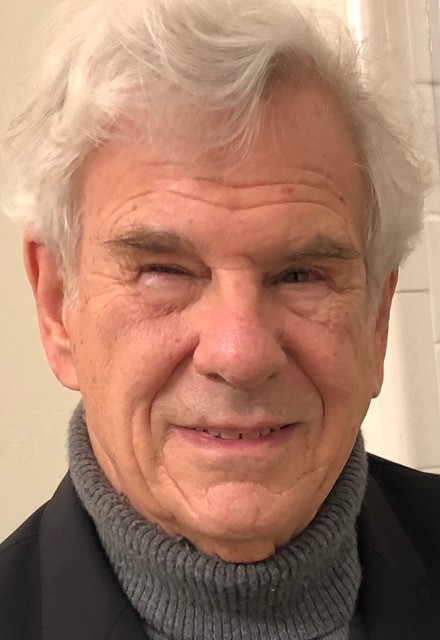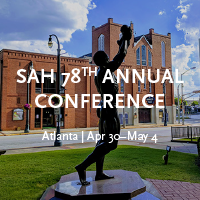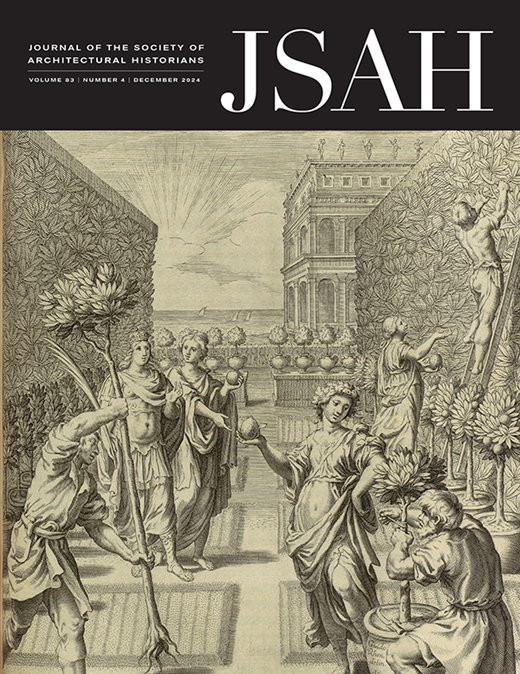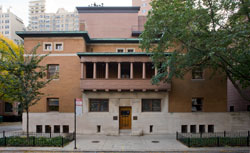-
Membership
Membership
Anyone with an interest in the history of the built environment is welcome to join the Society of Architectural Historians -
Conferences
Conferences
SAH Annual International Conferences bring members together for scholarly exchange and networking -
Publications
Publications
Through print and digital publications, SAH documents the history of the built environment and disseminates scholarship -
Programs
Programs
SAH promotes meaningful engagement with the history of the built environment through its programsMember Programs
-
Jobs & Opportunities
Jobs & Opportunities
SAH provides resources, fellowships, and grants to help further your career and professional life -
Support
Support
We invite you to support the educational mission of SAH by making a gift, becoming a member, or volunteering -
About
About
SAH promotes the study, interpretation, and conservation of the built environment worldwide for the benefit of all
Society of Architectural Historians Names 2025 Fellow of SAH
Feb 20, 2025
by
SAH News
CHICAGO, February 20, 2025 — The Society of Architectural Historians today named Stephen Tobriner as the 2025 Fellow of SAH. This award, conferred annually to one or more recipients since 1999, is the highest honor the Society bestows. It recognizes an SAH member for significant contributions to the architectural history profession, which may include scholarship, service to the Society, teaching, and stewardship of the built environment.
SAH will formally present the Fellow award to Tobriner at an award celebration on Wednesday, April 30, 2025, at the 78th Annual International Conference in Atlanta, Georgia.
Stephen Tobriner

Stephen Tobriner (pictured) is an architectural historian, educator, and archivist with a significant record of scholarly achievement, mentorship, and public engagement.
Tobriner received his Ph.D. from Harvard University (1972) specializing in the history of architecture and cities in Spain, Italy, and Latin America 1600-1750 and Mesoamerican architecture. His graduate paper, "The Fertile Mountain: An investigation of Cerro Gordo's importance to the town plan and iconography of Teotihuacan," Mesa Redonda (Sociedad Mexicana de Antropología, Mexico), 1972, pp. 103-115, provided an important and hitherto unnoticed iconographic key to understanding the ancient city of Teotihuacan in Mexico.
He taught the history of architecture and urbanism in the Architecture Department of the College of Environmental Design, University of California, Berkeley, from 1971 until 2006. Along with Spiro Kostof, Norma Evenson, Dell Upton, and Kathleen James-Chakraborty, he pioneered a revolutionary survey course in the late 1970s which included the architecture, urbanism and landscape history of the world. For his teaching of this course and his direction of its graduate teaching assistants he was awarded the University of California, Berkeley, Outstanding Faculty GSI Mentoring Award in 2004. Tobriner also taught courses in Mesoamerican architecture, Baroque architecture, cities in disaster, the city of San Francisco, the history of structures, and socially responsible architecture. In the Engineering Department he team-taught a course entitled Renaissance Engineers alongside a structural engineer, a mechanical engineer, and an historian of science. He also taught Baroque architecture as a visiting professor in the Architecture Department of the University of Palermo, Sicily, and was a member of the Italian Department of the University of California, Berkeley.
From 1973 to 1997 Tobriner was the curator of the College of Environmental Design Documents Collection, later to become the CED Archives. He directed, catalogued, supervised patrons, collected new materials, preserved accessions, and publicized one of the most extensive architectural and landscape archives in the western United States.
Tobriner holds a long fascination with the politics, sociology, and technology of earthquake-resistant engineering. He has published numerous articles and two books on the history of earthquake-resistant construction.
As an undergraduate in Italy he became fascinated by the Sicilian cities reconstructed after the earthquake of 1693, at the time neglected by architectural historians. His dissertation became the book, The Genesis of Noto, an Eighteenth-Century Sicilian City (London: Zwemmer Press, Berkeley: U.C. Press), 1982, reprinted in Italian as La genisi di Noto, una città italiana del Settecento, (Bari: Dedalo), 1989. It was the first comprehensive scholarly treatment of the architecture and urbanism of a Sicilian city and focused not only on well-known monumental architecture but also houses and other ordinary buildings. When the Cathedral of Noto collapsed in 1996 he was asked by the engineer supervising the reconstruction to study the construction history of the building. Tobriner organized a group of scholars to study the building. Their two volume report, Il Duomo di Noto, Ricerca Storico Archivistica, was completed for the completed for the Prefettura di Siracusa in 1998, and published in a book length edition of Lexicon, storia e architettura in Sicilia, Palermo I, 2002. For his contributions to the city of Noto Tobriner was awarded honorary citizenship in 2008.
In the last few decades, he has established himself as a respected scholar of the effect of earthquakes on architecture and of earthquake-safe construction. His book, Bracing for Disaster: Earthquake-Resistant Architecture and Engineering in San Francisco, 1838-1933 (Berkeley: The Bancroft Library and Heyday Books), 2006, shows that rather than denying seismic danger, many architects and engineers learned from the San Francisco earthquakes of 1868 and 1906 and attempted to build seismically resistant structures.
He also applies his knowledge for the public good. To publicize how the University of California Berkeley campus was confronting seismic danger he co-authored with Mary Comerio and Adriana Fehrenkamp Bracing Berkeley, A Guide to Seismic Safety on the UC Berkeley Campus (Berkeley: Pacific Earthquake Engineering Research Center, PEER 2006/01, College of Engineering, University of California, Berkeley), 2006. He regularly addresses earthquake engineers and has participated in international committees organized by the United Nations, the National Science Foundation, and professional engineering organizations to the sites of major tremors in the United States, Mexico, Japan, Turkey, Italy, and Armenia.
For more than 30 years, Tobriner served as the only Humanist scholar on the University of California Berkeley’s Seismic Review Committee, which assessed the safety of existing campus buildings and renovations. This proved a crucial connection. While teaching a class on structures, Tobriner decided to use Wurster Hall, the home of Berkeley's College of Environmental Design, as an exemplar. While explaining the huge building’s plan to his students, he was shocked to discover it was an earthquake collapse hazard. As a member of the campus Seismic Review Committee, he arranged for the building to be evaluated. Structural engineers corroborated his judgement. Wurster Hall was retrofitted and will not collapse in the next major earthquake. Tobriner regards this episode as a highpoint of his career. Here is an instance in which an architectural historian used his discipline to understand and preserve a building while, more importantly, protecting the lives of hundreds of students and their professors.
Tobriner first joined the Society of Architectural Historians as a graduate student in the late 1960s and has served as the Journal of the Society of Architectural Historians Book Review Editor, reviewed papers for publication, chaired convention sessions, presented papers, and published articles in the Journal.
About the SAH Fellows Program
The SAH Board of Trustees voted to create a Fellows program in April 1999 and incorporated the program into the organization's bylaws. Each summer, the Society calls for nominations from its community for individuals who have distinguished themselves in their career through exemplary scholarship, service to the Society, teaching, and/or stewardship of the built environment.
View a list of Fellows of SAH, 1999-2025.
About the Society of Architectural Historians
Founded in 1940, the Society of Architectural Historians (SAH) is an international nonprofit membership organization promoting the study, interpretation, and conservation of architecture, design, landscapes, and urbanism worldwide. The Society serves a network of more than 2,500 institutions and individuals who, by profession or interest, focus on the built environment and its role in shaping contemporary life. Through print and online publications, local, national and international programs, and advocacy efforts, SAH engenders meaningful scholarly and public engagement with the history of the built environment.
###
Media Contact:
Olivia Archer, Communications Manager
oarcher@sah.org
312-573-1365


